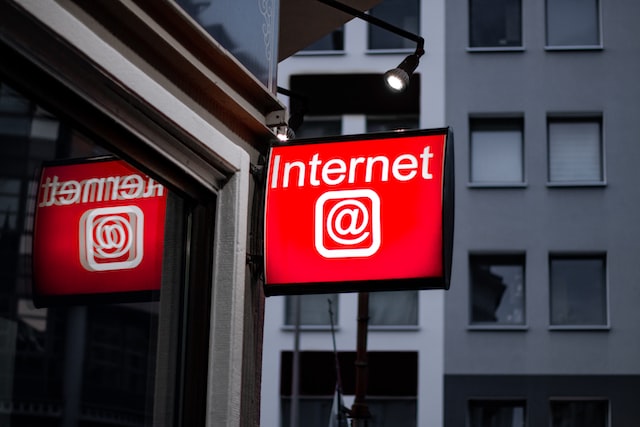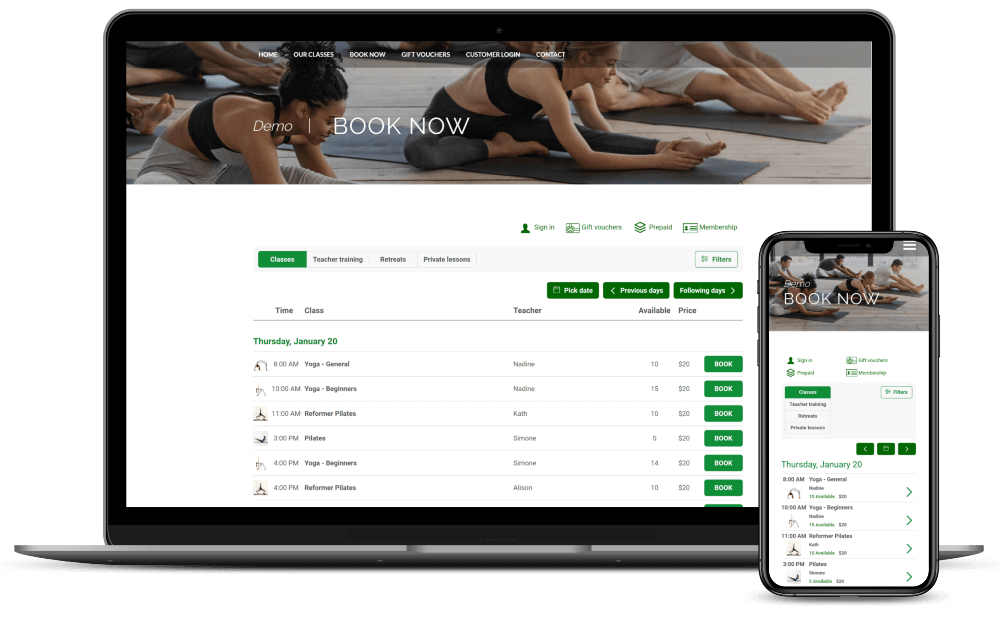
How to Grow a Small Business: Ultimate Guide
People can start their small businesses for various reasons, but ultimately they’d want to increase their revenue and grow the business into a profitable and sustainable one.
However, growing a small business can be very challenging in practice, and unfortunately, there’s no one-size-fits-all formula that can magically grow all businesses. Each business is unique, with a unique target market. Thus, it will also require unique tactics and strategies to achieve growth.
With that being said, there are key principles and best practices we can implement in all businesses to give them the best chance at growing, and this will be the main focus of this guide.
In this ultimate guide on how to grow a small business, we’ll share some actionable tips for accelerating the growth of small businesses, including but not limited to:
- Knowing and understanding your target market
- How to develop a working strategic plan
- How to build a strong branding
- Establishing a strong online presence
- Investing in your people
- Leveraging data and analytics to grow your small business
And more.
Without further ado, let us begin this article with the first tip.
Tips on how to grow a small business
1. Define and understand your target market
At its core, growing your small business means two things:
- Acquiring more new customers
- Retaining existing customers, so they make repeat purchases, again and again
Both are simply impossible if you don’t know and understand who your customers are, and this is why proper market research should be a very important foundation in growing your small business.

Knowing who your target market is and focusing your efforts on this target audience will give you the following benefits:
- It helps your marketing and sales efforts in reaching potential customers more efficiently. You can focus your valuable time and resources on the group (or groups) of consumers that are the most likely to purchase your products or services. Your salespeople can spend their efforts reaching out to leads who will benefit the most from your offers.
- It will improve the ROI of your marketing and sales investments. If, for example, you spend $1,000 on highly qualified leads, the return on this investment will be much higher due to the higher conversion rate.
- It improves the accuracy of your marketing and sales performance metrics. A marketing campaign targeted at a qualified group of target customers will appear more successful than if the campaign is directed to a more general group of consumers.
Identifying your target market
For some businesses, determining the target market can be very obvious.
For example, the target market of a fast food restaurant is very obvious: those living near the restaurant’s premises that actually love fast food. In such scenarios, if the restaurant already has an existing customer base, then identifying the ideal target market should be pretty straightforward.
However, for some other businesses, the target market might not be very obvious and might require extensive research and experimentation.

With that being said, there are three basic approaches to researching your target markets:
- Starting with the data you have (i.e., existing customer information, results of competitive analysis, etc.), analyze it, and then run small marketing campaigns to confirm the patterns/trends you find in the data.
- If you don’t have any substantial data to work with, you can run several small marketing campaigns targeting randomized groups of consumers. Review the resulting data and try to find patterns that may help you identify your target market.
- Get help from an outsourced marketing expert or a fully-fledged marketing agency. Over time, you can refine the target audience from their recommendations according to the market conditions.
Regardless of which method you choose, once you’ve identified your target audience, the next step is to gather as much information as you can about them: demographic, behavior, pain points, preferences, needs, and so on.
The better you know and understand who your target audience is, the stronger your foundation in growing your small business, so don’t underestimate the importance of this step.
2. Develop a strong brand identity
Without a strong brand identity, your small business simply won’t be able to win your target market’s attention amidst all the noise.
Yet, small business branding isn’t solely about having a memorable brand name and logo. While they are indeed important, strong small-business branding should be holistic and should include the following elements:
- Visual elements. Logo, color palette, web design, etc.
- Brand promises. What values and benefits are your company offering to your target audience?
- Brand reputation and brand message. Your voice and tone when communicating with customers, as well as your business’s unique value proposition (UVP.)
- Customer experience and expectation management. According to the other elements you’ve established above

In short, your brand identity is how you portray your brand to customers, and it will play an important role in shaping how your potential and existing customers perceive your business.
While there are various approaches you can use in designing your brand identity, in general, it will involve the following steps:
- Identifying your brand’s purpose and outlining its mission
- Competitive analysis, analyzing how your competitors approach their branding
- Identifying and understanding your target audience (as we’ve discussed above)
- Determining your brand’s personality
- Developing your brand story and brand messaging:
- Unique Value Proposition (UVP)
- Communication guidelines (tone of voice, prohibited terms, recommended terms, pronunciation, spelling of product names, etc.)
- Create a visual identity:
- Brand name
- Logo
- Color palette
- Imagery
- Etc.
- Integrating your brand into your business
Remember that developing your brand identity does not end when you’ve completed the design process, but ultimately branding is about consistency in integrating your brand into your business. Consistency in brand messaging is crucial in building brand recognition and consumer trust over the long term, which will be critical in helping your small business achieve sustainable growth.
3. Establishing a strong online presence
In this digital age, establishing a strong online presence is crucial for any small business to achieve growth.
There are two main ways consumers learn about new businesses at the moment: via Google search (for example, by searching “restaurants near me”), or via social media, for example, when an influencer mentions or reviews a brand or a product/service.

Without a strong online presence, you’ll simply miss out on engaging your potential customers, hindering your growth.
You should focus on establishing a strong presence in at least four different areas:
1. Professional website
A professional website is equivalent to your business’s digital storefront, and quite often, it will be the first impression for your customers when interacting with your brand.
Having a well-designed, fully-functional website is a must, and even if your business already has a relatively strong social media presence, your social profiles are not an adequate replacement for your website.
Fortunately, with easy-to-use visual website builders like Wix, Squarespace, other visual website builders as well as the handy and free WordPress, having a professional website is now much more accessible and affordable, and there’s simply no reason not to have one.
Your website should be:
- Well-designed according to the current aesthetic standards (and regularly updated)
- Optimized for mobile devices
- Loads fast; check Google’s PageSpeed Insights for your site’s speed performance
- Rich in information. Your website should be a central source of information about your business for your potential and existing customers
- Optimized for SEO, so consumers can find your website when searching for relevant keywords
- For service-based small businesses, the website should have reliable online appointment/booking functionality (more on this below). Additionally, financial management tools like Simplifi by Quicken, Monarch Money, or Rocket Money can greatly enhance your small business’s ability to track finances and budget effectively, helping further with sustainable growth.
2. 24/7 online booking
For service businesses that rely on client appointments like beauty salons, yoga studios, axe throwing, massage business and so on, it’s very important to have a fast and reliable 24/7 online appointment scheduling system on the website that is also integrated with the business’s social profiles.
 Consider the fact that in this post-pandemic world, consumers simply expect the convenience of booking their appointments online, and more and more people are now booking their services outside business hours. If your business still relies on pesky phone-based booking, it’s quite likely they’ll move on to your competitors.
Consider the fact that in this post-pandemic world, consumers simply expect the convenience of booking their appointments online, and more and more people are now booking their services outside business hours. If your business still relies on pesky phone-based booking, it’s quite likely they’ll move on to your competitors.
Fortunately, now integrating online booking functionality on your website is very easy and affordable. With Bookeo, for example, you can easily have a fully-functional online appointment software for small businesses with a WordPress booking plugin.
Attracting prospects to your website and engaging them, so they’re convinced to book your service is already challenging enough, and the last thing you’d want is for them to move on to your competitor just because you don’t have a reliable and easy online booking process.
3. Social media
With virtually everyone active on social media nowadays, it would only make sense to promote your small business on social media and build strong followers on relevant social platforms. The thing is, every business is also marketing on social media, so without a clear strategy, you’ll drown amidst all the noise.
When building a social media presence, it’s important to consider three different aspects:
- Organic: building your own followers and posting your social media content to attract organic traffic. This is the most affordable approach and can be totally free, but building your organic followers will take time.
- Paid: using various paid advertising options offered by the social platforms (i.e., Instagram ads, LinkedIn ads, etc.) They’ll virtually guarantee quick results but can be very expensive if you’re not careful.
- Influencer marketing: partnering with relevant influencers in your niche so they can help promote your small business. It can be cost-effective if you can find the right influencer(s) to partner with.

Ultimately, your social media marketing strategy should aim to find the right balance between these three elements of social media presence, which is essentially about cost vs. time: would you spend more to get faster results? Or would you prioritize keeping your costs low with slow and steady growth?
Regardless of your approach, building a social media presence should be one of your main focuses in growing your small business.
4. Google Maps
For small businesses targeting local customers (i.e., restaurants, bookstores, dental offices, etc. ), having a strong presence on Google Maps is critical. Today, local queries on Google (“restaurants near me,” “bookstores in NY,” “dental nearby,” etc.) have become one of the main ways people learn about local businesses.
The thing is, for these local queries, Google pulls results from Google Maps on top of the organic search results. So, if your business doesn’t rank on top of the Google Maps results in your relevant location/keywords, you’re going to miss out.
In short, it’s very important to have a clear local SEO/Google Maps SEO strategy.
While Google Maps SEO might seem daunting at the surface, in reality, you can perform it in just a few relatively simple steps:
- Claim and verify your Google Business listing here
- Optimize your listing. Focus on providing complete and relevant information for the human audience rather than putting too much focus on keyword optimization
- Get more (positive) reviews on your Google Maps listing, but also on relevant websites and platforms where you can get reviewed (TripAdvisor, etc.)
- Build local citations; online mentions of your business’s Name, Address, and Phone Number (NAP) on the internet. You can build local citations by listing your small business on relevant online directories for your industry/location.
Do these four steps consistently, and your business will slowly but surely climb the Google Maps ranking.
4. Develop your small business marketing plan
You’ve identified your target market, and you’ve established a strong foundation for your small business marketing. It’s time to finally develop a comprehensive marketing plan for your small business.
A marketing plan is a written document that outlines the different aspects of your marketing strategy: social media, advertising, content marketing, etc.

While there are a lot of different approaches to developing a marketing plan, most marketing plans follow this basic structure:
- Your marketing goal or goals and milestones
- Research and analysis results (competitive analysis, market research, buyer personas, etc.)
- Your detailed marketing strategy across different marketing channels
- A definition of your KPIs and how you are planning to track the performance of your marketing campaigns according to your goals
- Tactical step-by-step planning for your marketing efforts
Thus, in general, when developing the marketing plan for your small business, you should focus on three main things:
1. Listing your goals
Your ultimate goal is to achieve growth, but it will be more helpful to break it down into smaller, tangible goals.
We’d recommend following the SMART goals principle when defining your marketing goals:
- Specific: break down bigger goals into more specific goals and milestones. The more specific your goal is, the better.
- Measurable: you should be able to define KPIs to measure each campaign’s performance against this goal
- Attainable: goals should be realistic and achievable so you can maintain your team’s morale and motivation in achieving them
- Relevant: relevant to your business’s overall objective and mission
- Time-bound: you should be able to assign a clear timeline for each goal

Here are a few examples of marketing goals you can use as inspiration:
- Capture 1,000 email addresses from social media each month (lead generation)
- Increase free trial or demo requests by 10% each year
- Produce three new blog posts each week
You can have as many goals as you can as long as you can keep track of them and build an actionable plan for achieving each of them. List your goals, and prioritize them, starting with your big goals to the smaller ones.
2. Choosing the right channels and tactics
There are numerous marketing channels you can choose from, both online and offline, but in most cases, modern marketing strategies should focus on five main channels:
- Content marketing: blog posts, social media posts, podcasts, videos, etc., to drive traffic to your website and to establish credibility. Support your content marketing with SEO.
- Email marketing: mainly for nurturing leads that have submitted their email address until they are ready to make their purchases and convert into customers
- Paid advertising: both online and offline to generate fast results.
- Events: joining and hosting events to build relationships, create awareness, and establish credibility
- Social media: both in terms of regularly publishing high-quality and relevant posts and investing in paid social media advertising. Also include partnering with the right influencers in promoting your brand or product/service (influencer marketing.)
Figure out how your goals (as defined above) fit into these five channels while considering your business’s bigger strategy and objectives. Of course, you can try using other channels and tactics as you see fit.
3. Set a marketing budget
While admittedly, the accounting side of things is boring, having a clear marketing budget is critical if you really want to grow your small business. If you acquire 1,000 new customers, but you lose money with each acquisition since you went over budget in your marketing efforts, you are not growing.

It’s important to know what your budget is and stick to it.
While there are various approaches you can use to determine your budget, we’d recommend researching other small businesses in your area to figure out how much they are spending on marketing and why. You can then fine-tune your own budget using this data, and as time goes on, you can evaluate and adjust your budget as you see fit
5. Invest in people
At the early stage of your business, you might be able to handle everything on your own as a solopreneur or probably with one or two partners.

Yet, if you really want to grow and scale your business, you’ll need a proper team, either building an in-house team or outsourcing to freelancers, contractors, agencies, or consultants. Whether you can get the right people to work for/with you can literally make or break your business’s chance to grow.
It’s also important to consider that any new hire or new outsource would require an adjustment period while you’d want to maintain agility. This is where establishing a clear company culture is important so you can minimize this adjustment period.
6. Form strategic partnerships
Whenever possible, avoid competition and collaborate instead.
Forming partnerships with the right businesses can really help your business in amplifying its growth either by allowing you to reach new customers or serving your existing customers better.

However, finding these valuable partnerships can be easier said than done, and if you partner with the wrong companies, it can be counterproductive. Make sure to do your homework first, and don’t be afraid to experiment.
7. Acquire other businesses
Another viable strategy to quickly grow your business is to acquire other businesses.
Acquiring competitors is a very quick way to gain new customers while at the same time eliminating one or more of your competitors. Alternatively, you can try to acquire businesses in other industries that would complement yours and help you either in acquiring new customers or providing more value to your existing customer base.
Explore your opportunities, and don’t be afraid to invest once you find good deals.
Wrapping Up
Growing and scaling your business is difficult, and it’s only going to be more challenging if you don’t know where to start.
Ultimately, growing your business is about amplifying your strengths in catering to your target market’s needs and preferences while eliminating your weaknesses in the process.
So, the most important foundation in achieving sustainable growth is a thorough understanding of your target audience: the better you understand whom you are selling your product/service to, the better you can develop marketing tactics and strategies to acquire more customers while retaining existing ones.
While growing your small business can be challenging, the tips and strategies we’ve shared above should give you a solid foundation to achieve growth in a more accessible, cost-effective, and sustainable way.

